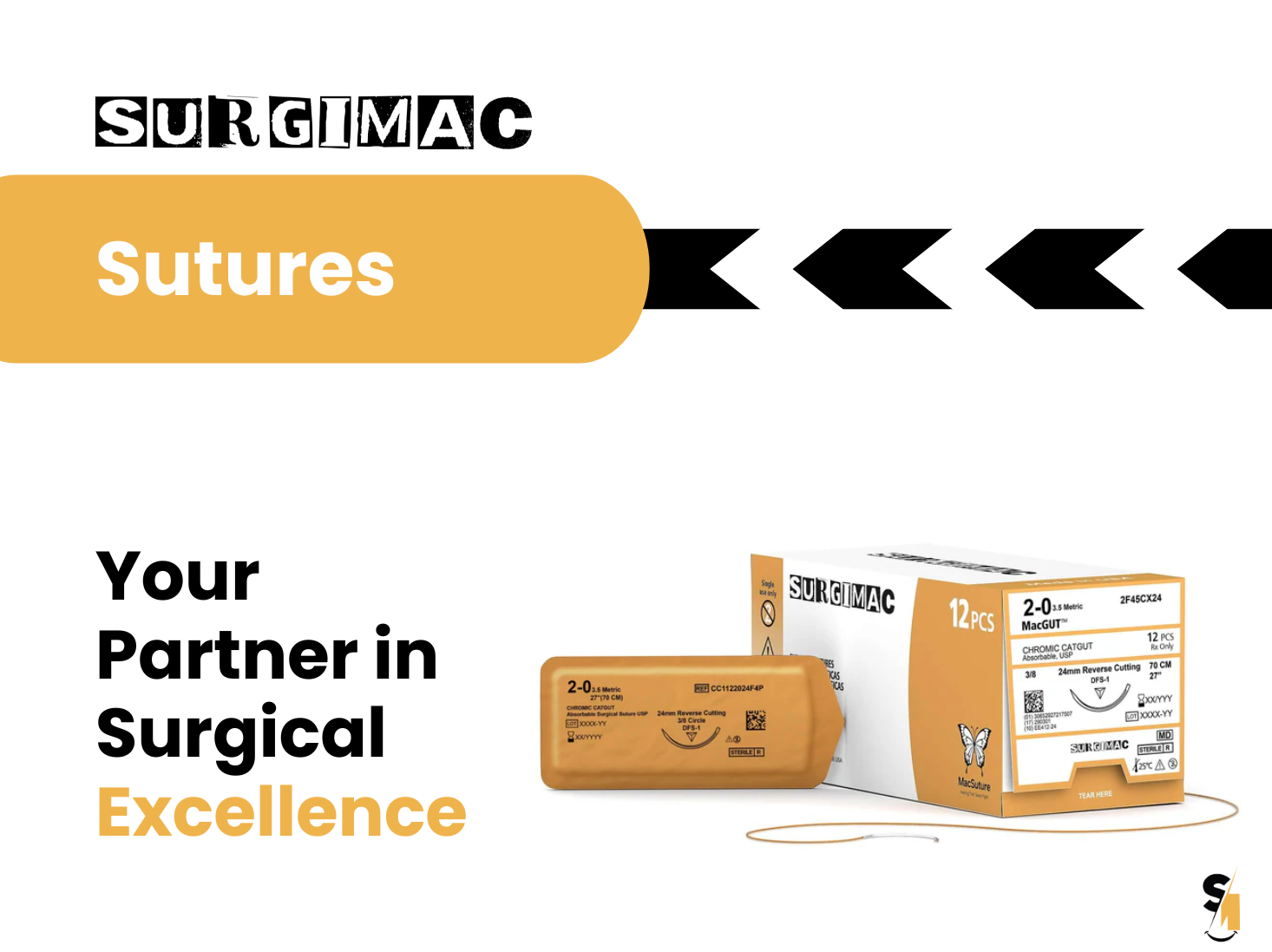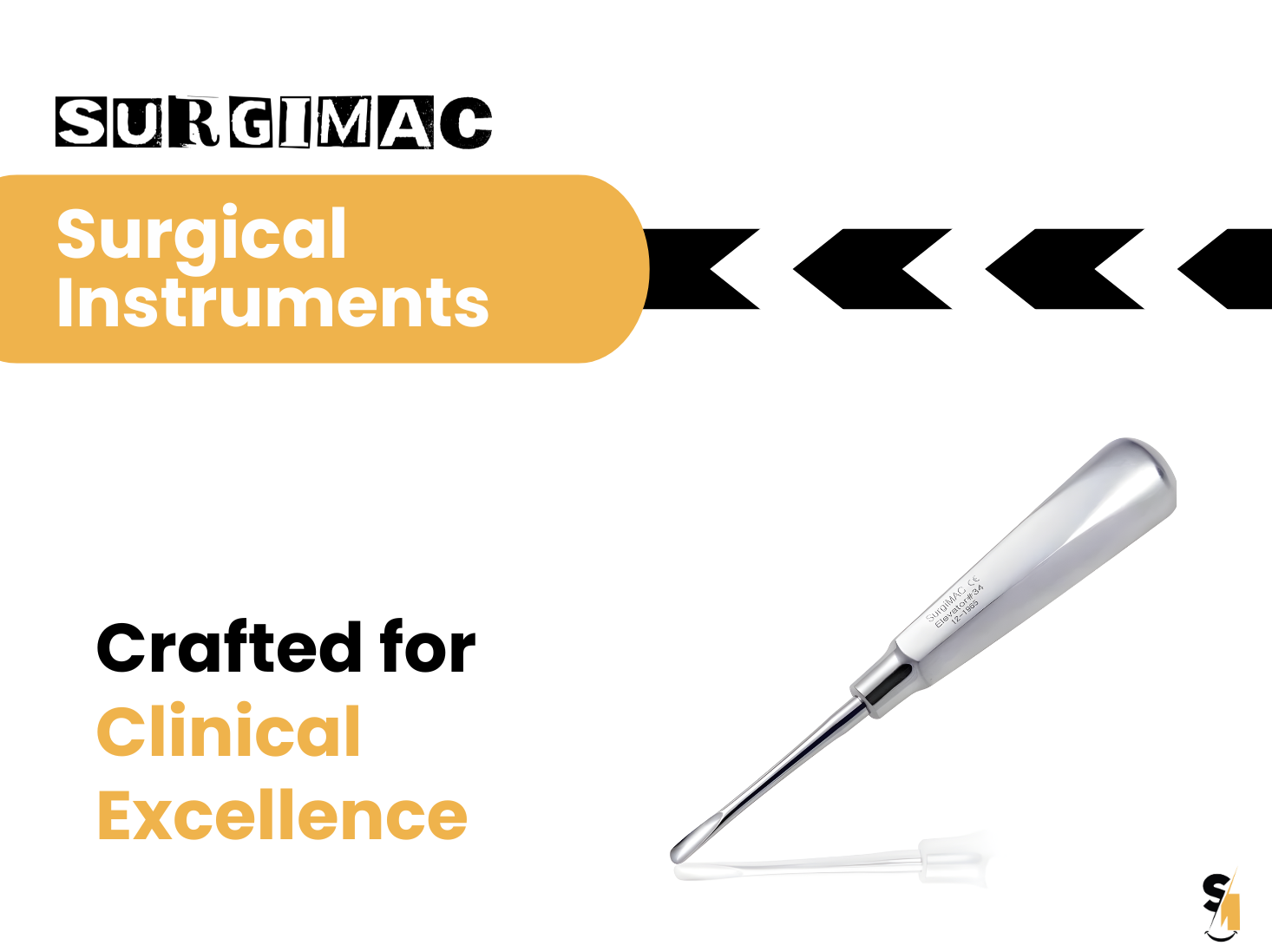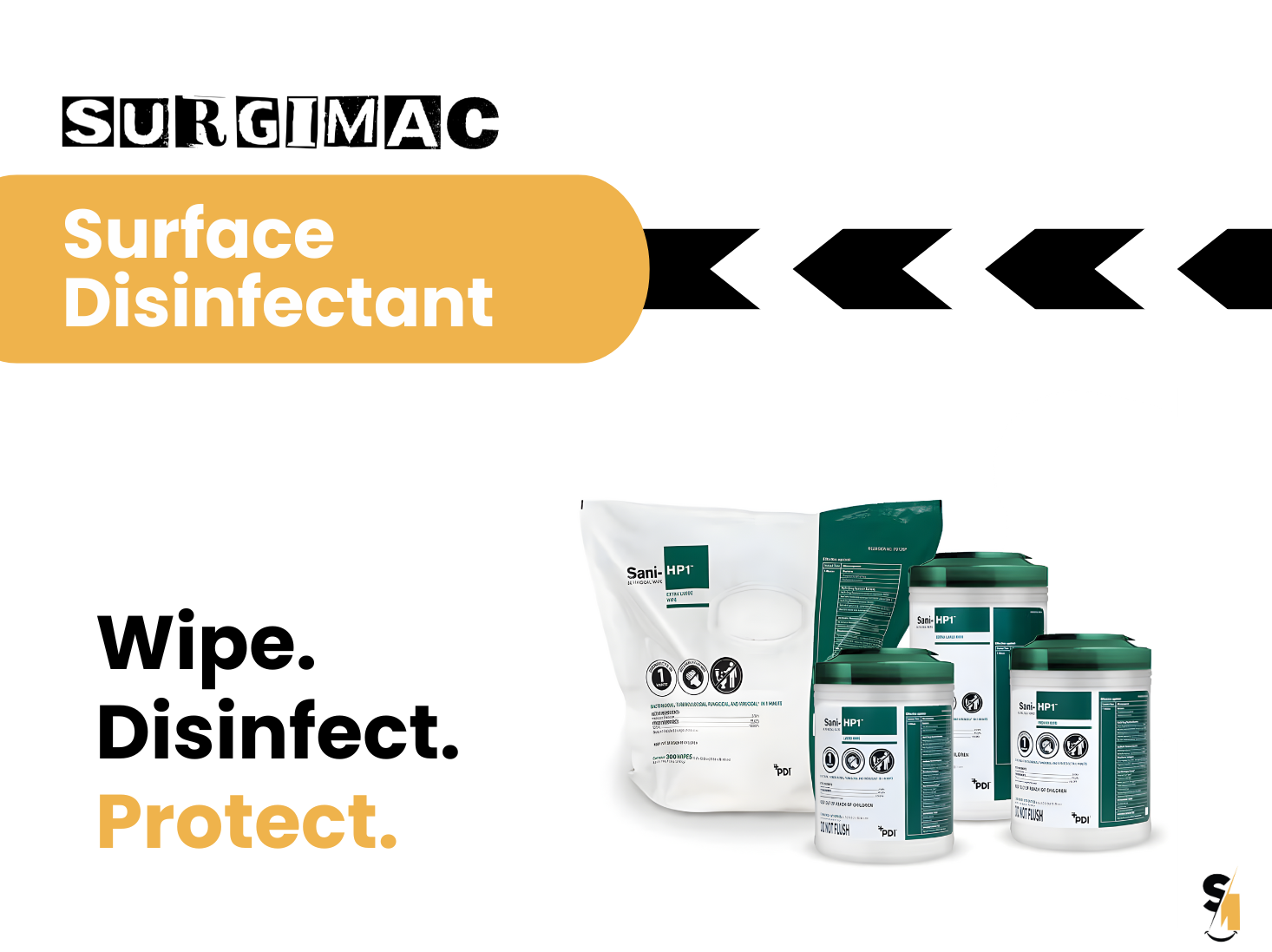Find out how dental forceps design, ergonomics, and material choices impact extractions. Get tips for choosing and caring for your dental forceps.
The physical demands of dentistry are real, and performing extractions can contribute significantly to hand fatigue. The design of your instruments plays a critical role in your comfort and career longevity. Modern dental forceps are engineered not just for the tooth, but for the clinician. This guide explores how ergonomics, weight, and balance are transforming extraction procedures. We will examine how features in thoughtfully designed instruments, such as the exceptionally lightweight tools in our Air Series or the streamlined feel of the Slim Series, can reduce strain and allow for greater dexterity, helping you work with precision and comfort throughout the day.
Dental forceps are essential instruments for any dentist performing tooth extractions. With a wide variety of forceps available, understanding their specific functions and applications is crucial for efficient and successful procedures.
This guide by SurgiMac explores the different types of dental forceps, their design features, and their intended uses. Whether you are a seasoned dentist or new to extractions, this information will help you make informed decisions when selecting the right forceps for your patients.

When is a Tooth Extraction Necessary?
While conservative treatments are always preferred, tooth extraction may be necessary due to:
-
Extensive Caries: When decay is beyond restoration.
-
Periodontal Disease: When gum disease compromises supporting structures.
-
Impacted Teeth: When teeth fail to erupt properly.
-
Orthodontic Reasons: To create space for proper tooth alignment.
-
Trauma or Injury: For severely damaged teeth.
The Smart Design Behind Dental Forceps
Dental forceps operate as levers, allowing dentists to grasp and manipulate teeth for extraction. They consist of three main parts:
- Beak or Tip: The active part, designed to grasp the tooth securely.
-
Joint: It joins the handle to the beak, so movement can be controlled.
- Handle: The passive part, providing leverage and control.
The beak is designed carefully to fit with the anatomy of the tooth to ensure a tight grip without harming the surrounding tissues. The angle of the joint varies according to whether the forceps are upper or lower.
Your Guide to the Different Types of Dental Forceps
American vs. English Patterns: What's the Difference?
Selecting Forceps for Maxillary Teeth
-
Bayonet-pattern forceps: Resemble a bayonet, providing maxillary reach.
-
Left/right pairs: Pointed tips for efficient extraction. Location-specific designs for anterior, root, or molar teeth.
Selecting Forceps for Mandibular Teeth
-
Cowhorn forceps: Sturdy and controlled mandibular grasp.
-
Tri-pointed beaks: Superior grip and leverage, available in anterior, root, and molar varieties.
Forceps for Permanent Dentition
Maxillary:
Mandibular:
Forceps for Primary (Deciduous) Dentition
-
Smaller and more delicate for primary teeth.
Handling Root Tips: Forceps for Root Remnants
-
Upper Jaw: Bayonet-shaped forceps.
-
Lower Jaw: Forceps with fine, pointed beaks or lower incisor forceps.
Innovations in Forceps Materials and Design
The fundamental design of dental forceps has been refined over centuries, but modern manufacturing has introduced significant advancements. Today’s instruments are not just about leverage; they incorporate sophisticated materials, coatings, and ergonomic features that improve clinical outcomes, reduce patient trauma, and minimize operator fatigue. These innovations focus on creating tools that are more durable, precise, and comfortable to use, allowing clinicians to perform extractions with greater confidence and control. From specialized coatings that enhance grip to handles designed for perfect balance, the evolution of forceps continues to support the demands of contemporary dental practice.
Advanced Materials and Coatings
The foundation of any reliable dental instrument is the material it's made from. Modern forceps are crafted from high-grade surgical stainless steel to ensure strength, corrosion resistance, and the ability to withstand repeated sterilization cycles. At SurgiMac, our Pro Series instruments exemplify this commitment to quality, offering exceptional durability for consistent clinical performance. Beyond the base material, advanced coatings have become a game-changer. Some forceps feature diamond-dusted tips for a superior grip on the tooth surface, even in wet conditions. Another key innovation is the use of specialized coatings, like those on our Titanium Black Series, which are designed to reduce glare and enhance contrast, improving visibility during delicate procedures.
Enhanced Grip and Precision
A secure grip is non-negotiable during an extraction. Slippage can lead to iatrogenic damage to adjacent teeth, soft tissue injury, or root fracture, complicating the procedure significantly. To address this, many modern forceps incorporate micro-serrations or textured patterns on the beaks to firmly engage the tooth. This design provides a much better hold, making extractions more predictable and less traumatic for the patient. The goal is to transfer force directly to the tooth without losing control. Instrument lines like SurgiMac's Hexa Series are designed with this principle in mind, featuring non-slip grips and ergonomic handles that ensure maximum tactile feedback and precision, which is critical for complex surgical extractions.
Ergonomic and Task-Specific Designs
Performing extractions can be physically demanding, and instrument design plays a huge role in mitigating operator fatigue. Innovations in ergonomics have led to forceps that are lighter, better balanced, and shaped to fit comfortably in the hand. For instance, some designs feature spring-loaded handles that automatically open, reducing the strain required to maintain a ready position. Our Air Series instruments are crafted to be exceptionally lightweight, delivering flawless balance and reducing hand fatigue during lengthy procedures. Similarly, the Slim Series offers compact, ergonomic designs for clinicians who prefer a more streamlined feel. These thoughtful ergonomic features allow for greater dexterity and sustained control, ultimately contributing to a safer and more efficient extraction process.
How to Choose the Right Dental Forceps
SurgiMac suggests that you should consider the following factors while choosing the right forcep for your need:
-
Tooth Type and Location: Choose forceps specifically designed for the tooth.
-
Accessibility: Consider the patient's mouth opening and tooth accessibility.
-
Root Morphology: Evaluate root shape and anomalies.
-
Crown Condition: Assess if the crown can withstand extraction forces.

Evaluating Warranties and Durability
When investing in dental instruments, the warranty is more than just a policy—it’s a reflection of the manufacturer's confidence in their product's quality and longevity. Some brands offer a standard one-year warranty against manufacturing defects, while others provide a lifetime warranty, signaling a deep commitment to craftsmanship. This guarantee is crucial, as forceps must withstand significant force and repeated sterilization cycles. A forcep's durability comes down to the quality of its materials and construction. Instruments forged from high-grade stainless steel, for example, offer superior resistance to corrosion and wear, ensuring they maintain their integrity over years of use. For clinicians who demand unwavering reliability, choosing instruments from a trusted line like SurgiMac’s Pro Series ensures you are working with premium-grade materials designed for clinical excellence and long-term performance.
Proper Care and Sterilization of Dental Forceps
To maximize the lifespan of your dental forceps and ensure the highest level of patient safety, a strict care and sterilization protocol is essential. High-quality instruments are an investment, and proper maintenance protects that investment. Always begin by following the manufacturer's specific guidelines for cleaning and sterilization, as different materials and finishes may have unique requirements. Consistent adherence to these protocols not only preserves the instrument's function and structural integrity but also upholds critical standards of infection control. Instruments crafted from robust materials are designed to endure the rigors of autoclaving and chemical disinfection. By implementing a systematic approach to sterilization, you ensure your forceps remain reliable, safe, and effective for every procedure, protecting both your patients and your practice.
Best Practices for Instrument Reprocessing
Effective instrument reprocessing is a multi-step process that guarantees sterility and preserves the quality of your dental forceps. First, instruments should be thoroughly cleaned immediately after use to remove all bioburden before it dries. Following cleaning, conduct a careful inspection of each forcep, checking for any signs of wear, pitting, or damage to the beaks and hinges that could compromise its function. Instruments that pass inspection can then be packaged and sterilized according to established clinical protocols, typically using an autoclave. Proper handling and storage after sterilization are equally important to prevent recontamination and maintain instrument readiness. Adhering to these best practices ensures that your dental instruments remain in optimal condition, providing reliable performance for countless procedures.
Precision and Ergonomics: The SurgiMac Forceps Collection
SurgiMac provides a wide range of dental forceps from top manufacturers, so you can find the right instruments for your practice. Our forceps are made from high-quality materials to provide durability and precision.
Why Choose SurgiMac for Your Practice?
Our company, SurgiMac, promises dental professionals only the best of the instruments and supplies at affordable prices. All our selections, ordering processes over the Internet, and supportive customer services are designed to be your dependable partner.
Frequently Asked Questions
1. What are the most common types of dental forceps?
The most common types are upper and lower types, categorized based on the type of teeth, such as forceps for incisors, molars, premolars, and a root fragment. Patterns include American and English.
2. How do I choose the right forceps for a specific tooth?
Consider the tooth's location: upper or lower, type (anterior, molar, etc.), root morphology, and crown condition. Select forceps that are anatomically designed for the tooth so that a firm grip can be obtained without causing damage to surrounding tissues.
3. What are the advantages of using disposable forceps?
Disposable forceps are convenient and hygienic because they can be used for a single session. They tend to reduce cross-contamination as they are appropriate for quick extractions, mainly in high turnover clinical environments.
4. How do I properly sterilize reusable forceps?
Sterilize reusable forceps by thorough scrubbing with a detergent or enzymatic agent, followed by autoclaving. Make sure to follow your office's protocols and do not contaminate any longer than necessary.
5. How do I hold dental forceps correctly?
Grip the forceps with your thumb and index finger by the handle. Use your other fingers to stabilize the handle for better control and leverage. The beaks should be positioned around the tooth for a firm yet gentle grasp.
6. What are dental forceps made of?
Dental forceps are typically made of stainless steel, ensuring strength, corrosion resistance, and longevity.
7. What are the differences between American and English pattern forceps?
American pattern forceps have a horizontal hinge and a compact design, while English pattern forceps have a visible screw at the hinge, offering greater leverage.
8. What are the best forceps for extracting upper molars?
Forceps such as #18L, #18R, #53L, #53R, and #88L/R are commonly used for extracting upper molars, depending on their specific location.
9. What are the best forceps for extracting lower molars?
For lower molars, forceps like #15, #17, #16, and #23 are widely used due to their strong grip and leverage.
10. What forceps are used for root remnants?
Bayonet-shaped forceps are used for the upper jaw, while fine-pointed beak forceps are used for the lower jaw to remove root remnants.
Helpful Clinical Resources
Ready to enhance your dental procedures?
Explore SurgiMac's collection of dental forceps and other essential instruments for your practice.
Manufacturer Guides and Instructions for Use (IFU)
To ensure patient safety and get the most out of your dental forceps, it's essential to understand their proper use and care. Every instrument comes with manufacturer guides and Instructions for Use (IFU) that provide critical information on how to handle, clean, and sterilize them correctly. Think of the IFU as the official manual for your instrument; following it is a fundamental part of maintaining a safe and efficient clinical environment. These documents are not just suggestions—they are your roadmap to ensuring every instrument, from a simple explorer to a complex surgical forcep, performs as intended throughout its lifespan.
The IFU outlines the validated procedures for instrument reprocessing. As noted by dental compliance experts, these instructions detail everything from pre-cleaning and disinfection to the specific sterilization cycles required. For example, many manufacturers, like Salvin Instruments, emphasize that new instruments are delivered non-sterile and must be properly cleaned and sterilized before their first use. This is a critical step in your infection control protocol. Whether you are using instruments from our durable Hexa Series or another trusted brand, always consult the IFU first.
Keep in mind that different manufacturers may have unique guidelines for their instruments based on materials and design. Some may recommend specific cleaning agents or processes, like using an instrument lubricant that is compatible with your sterilization method to protect hinges and extend the instrument's life. Adhering to these manufacturer-specific guidelines is crucial for maintaining the integrity and warranty of your tools. By consistently following the IFU provided with your dental forceps, you ensure they are used safely and effectively, which directly contributes to predictable and positive patient outcomes.
You Might Also Like
Key Takeaways
-
Match the Forcep to the Tooth: Your choice of forceps directly impacts procedural success. Always match the instrument's design—beak shape, angle, and pattern—to the specific anatomy of the tooth you're extracting for a predictable, less traumatic outcome.
-
Leverage Modern Instrument Design: Reduce hand fatigue and enhance your control by choosing forceps with advanced ergonomic features. Instruments like the lightweight Air Series or glare-reducing Titanium Black Series are engineered for better balance and precision, supporting your long-term physical well-being.
-
Protect Your Investment with Proper Care: The longevity and reliability of your forceps depend on meticulous maintenance. Consistently follow the manufacturer's Instructions for Use (IFU) for cleaning and sterilization to ensure patient safety and preserve the integrity of your high-quality instruments.
Related Articles









